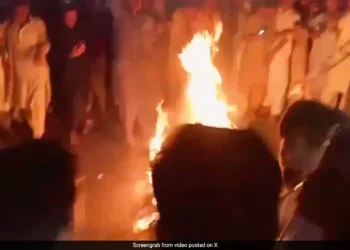Forty years after the Bhopal gas disaster, the transfer of approximately 337 metric tonnes of chemical waste kept at the Union Carbide factory site began on Wednesday for disposal.
On the evening of December 2, 1984, a large discharge of methyl isocyanate (MIC) gas from the Union Carbide facility turned the city into a gas chamber, resulting in the deaths of over 15,000 individuals and impacting more than 600,000.

The waste associated with the fatalities in one of India’s most catastrophic industrial accidents was managed under the oversight of the district administration, municipal corporation, health department, and pollution control board. The disposal will occur at a site in Pithampur.
Up to 12 containers that are leak-proof and fire-resistant were utilized for transporting the waste, with each one holding an average of 30 tonnes. Approximately 100 employees participated in the operation, with shifts restricted to 30 minutes because of safety issues.
While transferring the chemical waste into containers, a 200-meter radius surrounding the location was cordoned off. Every access point was shut, and more than 1,000 police officers were assigned for security.
Also read: Musk Blames Bomb or Fireworks for Tesla truck Explosion at Trump Hotel
The waste was transported via Bhopal, Sehore, Dewas, and Indore to arrive at Pithampur. To guarantee safe transport, the convoy of 12 containers traveled at an average speed of 50 kilometers per hour. It comprises police escorts, ambulances, physicians, fire department units, and rapid-response teams, totaling 25 vehicles, which will be moving overnight.
The waste consists of five categories of materials, including leftovers of Sevin, a pesticide made at the Union Carbide plant. The location also had methyl isocyanate (MIC), the gas responsible for thousands of fatalities during the catastrophe. Extra materials consist of reactor waste, polluted soil, and various chemicals utilized at the facility.













